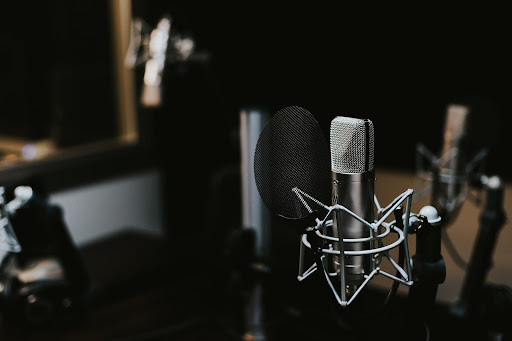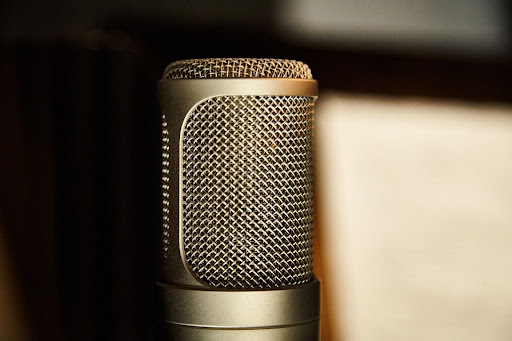If you are an aspiring voiceover artist looking for ways to record better voiceovers, you are here at the right place.
The following tips are quite easy to implement and will help you get more projects that require high-quality voiceovers.
Here is what you need to know:
Find a Quiet Spot to Record

There are sounds within your home and noises out in the neighborhood that you are probably so used to hearing that you don’t really notice them anymore. A few examples of the outside noises might include but aren’t limited to the following:
- Loud neighbors
- Lawnmowers
- Street noises/ traffic
- Barking dogs
- Airplanes
The noises from inside your house might include but aren’t limited to the following:
- Television
- Your kids are playing
- Air conditioners running
- A humming refrigerator
It is important to know that while you might be able to tune out these noises and sounds, your microphone won’t be able to do so. That said, all these noises can end up creeping their way into the recordings of your voiceovers.
Before you get disappointed, let us take you to the good news – the good news is that most places inside your house can actually be quiet enough to record quality voice overs; even if it feels like you are interrupted from time to time, it is not that big of a deal.
For the inside noise, you might want to walk around the house and find the source(s) that is producing the noise so that you can turn it off. While you don’t have as much control over the outside noise, you can easily fix and turn off the inside noises.
You might also consider recording in a room that is as far as possible from the noise source. Besides, you can think about recording at certain times of the day or night when the noise isn’t there.
Nonetheless, if there is absolutely nothing you can do about the noise, your best option would be to invest in an isolated vocal booth.
A vocal booth is specifically built to prevent outside sound waves from entering the enclosed space. The vocal booth will help you record quality voice overs by blacking out any inside and outside noises while providing you with a soundproof setting where you can record your voice overs in peace.
The bottom line is to simply find the quietest spot in your house as a sufficient starter for recording quality voiceovers.
Only Record Your Voice
Suppose you have found the perfect spot to record your voice overs – you must pay attention to recording your voice and not the room. While the previous tip was all about controlling the outside noises and finding the perfect spot to record – this tip is about controlling the sounds inside the room.
One of the most important things you can do regarding this is to treat your room acoustically. You have to understand that every room inside your house will have a different recording sound. Think about it this way:
You sound differently in the shower vs. when you are working out in a gym.
That said, your voice is more likely to bounce off the walls, ceiling, and floors inside a normal untreated room. Eventually, the microphone will naturally pick up the bounce. This aspect, also known as room reflection, is very distracting. Besides, it will also make your voiceover sound rather bad.
However, the good news is that it is rather easy to eliminate room reflection. One of the easiest ways to remove room reflection is to record your voice overs inside a closet. If you are wondering why we are saying closet, you will be surrounded by clothes that will significantly reduce room reflection.
Don’t worry; you won’t be the only voiceover artist working from inside the closet – once you get the hang of it, you know that it sounds very good from inside the closet.
Another method to remove room reflection is investing in thick moving blankets that can be hung from the ceiling and establishing a voiceover tent. Nonetheless, if you prefer working in a spacious open room, your easiest bet is to get some acoustic foam panels.
Place the acoustic foam panels on the walls to eliminate the room reflection. Also, be mindful of any other noise that you might introduce in your room. Suppose your computer fan makes noise. Make sure that you keep it away from the microphone; preferably, it should be placed outside the recording space.
Invest in a Decent Mic

It doesn’t matter how passionate and dedicated you are in acing your accents for the voiceovers; if you don’t have the right quality equipment, nothing will go right with the final outcome. That said, make it a priority to invest in a decent mic.
Understandably, there are countless microphone options out there in the markets and online stores – the mics work quite well for a voiceover, but there are a few mics that you should never use for recording a voiceover.
For instance, refrain from using a webcam mic. Also, don’t make the mistake of using a Zoom or any other handheld device that is inbuilt in the mic. The same goes for your smartphone or the internal microphone of a camera.
Mics like these are simply not good enough for high-quality voiceover recordings.
None of the previously-mentioned mic options will pick up the clarity and richness of your voice, which are mandatory for better-sounding voice overs. That said, we recommend investing in microphones that have been specifically built for voice overs, such as the TLM 103 Neumann.
While the price tag can be a tad bit hefty, you can also search the market for more affordable options, such as the condenser microphone of MXL VG67. One important thing to keep in mind regarding mics is that the more expensive the mic, the more crucial it gets for you to treat your room properly and make it acoustic as the mic is more likely to pick up everything – the good and the bad.

